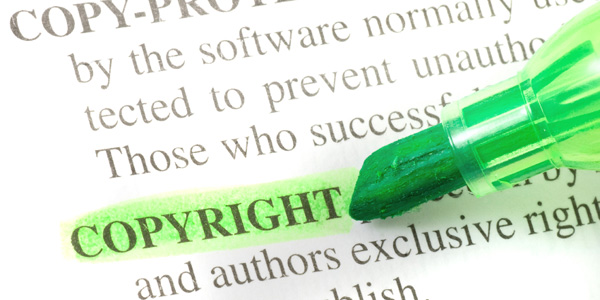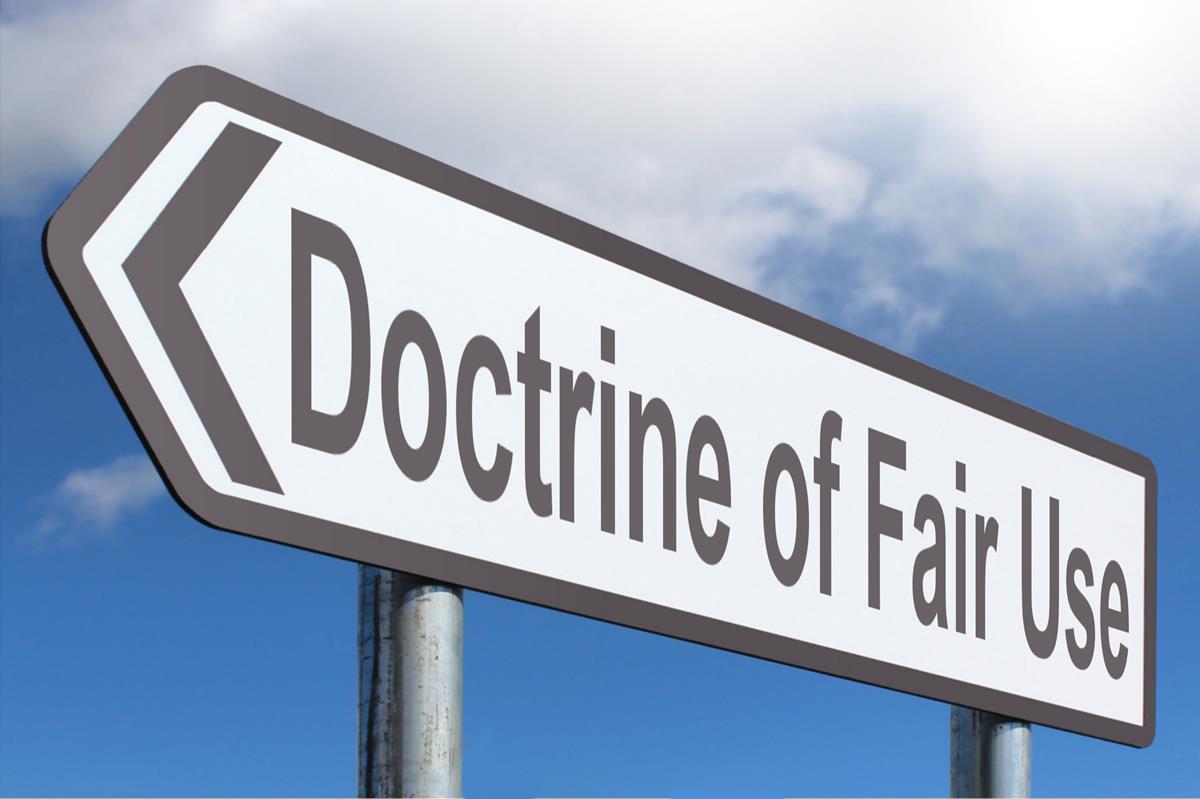
Texts
You may use up to 10% of the total, or 1,000 words, whichever is less.
You may use an entire poem of less than 250 words, but no more than three poems by one poet, or five poems by different authors in an anthology. For poems exceeding 250 words, you may not use more than three excerpts from one poet or five excerpts from different poets in the same work.
Images
You may use no more than five images from one artist or photographer.
You may use no more than 10%, or 15 images, whichever is less, from a collection.
Music

You may use up to 10% of the work, but no more than 30 seconds of the music or lyrics from an individual music work.
Movies and Videos
You may use up to 10% of the total, or three minutes, whichever is less.
Copyright

"A form of protection provided by the laws of the United States for "original works of authorship", including literary, dramatic, musical, architectural, cartographic, choreographic, pantomimic, pictorial, graphic, sculptural, and audiovisual creations. "Copyright" literally means the right to copy but has come to mean that body of exclusive rights granted by law to copyright owners for protection of their work. Copyright protection does not extend to any idea, procedure, process, system, title, principle, or discovery. Similarly, names, titles, short phrases, slogans, familiar symbols, mere variations of typographic ornamentation, lettering, coloring, and listings of contents or ingredients are not subject to copyright."
U.S. copyright Office. (n.d.). Retrieved February 22, 2021, from https://www.copyright.gov/help/faq/definitions.html

Fair Use
Fair use is a concept embedded in U.S. law that recognizes that certain uses of copyright-protected works do not require permission from the copyright holder. (See Title 17, section 107).
The following four factors are used to determine if a use is fair:
“Copyright and Fair Use: Fair Use.” Lehman Library, Shippensburg University, 2021, library.ship.edu/copyright/fairuse.
It's more likely to be fair use if
"The Four Factors of Fair Use - Lesson Slides" by Common Sense Education is licensed under CC BY-NC-ND 4.0.
Public Domain
A public domain work is a creative work that is not protected by copyright and which may be freely used by everyone.
Works fall into Public Domain for 3 main reasons:
As a general rule, most works enter the public domain because of old age. This includes any work published in the United States before 1923. Another large block of works are in the public domain because they were published before 1964 and copyright was not renewed. (Renewal was a requirement for works published before 1978.) A smaller group of works fell into the public domain because they were published without copyright notice (copyright notice was necessary for works published in the United States before March 1, 1989).
“Copyright and Fair use - Public Domain.” Lehman Library, Shippensburg University, 2021, library.ship.edu/copyright/fairuse.
Case Scenarios

"Max is working on a flyer for his computer repair business to post on his social media accounts. He finds a cool computer repair business logo and uses part of it in the flyer."
"The Four Factors of Fair Use - Lesson Slides" by Common Sense Education is licensed under CC BY-NC-ND 4.0.

"A group of students is making a video for their class remembering the 2020 pandemic school year. They use the song "Carry On" by Crosby, Stills, Nash & Young in the in the background. The video is shown on their school's Youtube Channel."
"The Four Factors of Fair Use - Lesson Slides" by Common Sense Education is licensed under CC BY-NC-ND 4.0.

"Evan takes a famous magazine cover, keeps the image, but changes the headlines on the cover in order to criticize the publication's agenda."
"The Four Factors of Fair Use - Lesson Slides" by Common Sense Education is licensed under CC BY-NC-ND 4.0.

"Otto uses an image file he found on Wikimedia Commons to create a new version of the Mona Lisa painting with Adobe Photoshop. He adds it to his website where he sells other photos he has created."
"The Four Factors of Fair Use - Lesson Slides" by Common Sense Education is licensed under CC BY-NC-ND 4.0.

"Adam uses a random funny meme he found with Google image search in order to illustrate a point about fair use on his Google slides presentation for his class without attribution."
"The Four Factors of Fair Use - Lesson Slides" by Common Sense Education is licensed under CC BY-NC-ND 4.0.
Four Factors of Fair Use in the Classroom

1.The purpose and character of the use, including whether such use is of a commercial nature or is for nonprofit educational purposes;
2.the nature of the copyrighted work;
3.the amount and substantiality of the portion used in relation to the copyrighted work as a whole; and
4.the effect of the use upon the potential market for or value of the copyrighted work.
Avoid plagiarism, cite!
![]()
Somebody who plagiarizes is a kidnapper, taking somebody else's intellectual property hostage. Don't be one!
Chaminade College Preparatory School Library citation guide or the OWL MLA citation guide.